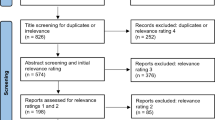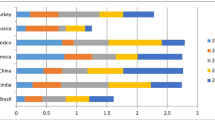Abstract
This paper describes how energy policy can be evaluated in practice. The goal is to make policy makers aware of how an evaluation can be based on scientific principles and to help economists appreciate how an evaluation can be performed if strong empirical evidence is lacking. We have built a basic evaluation framework and have applied this to a selection of Dutch energy policy instruments, namely production subsidies and their complementary non-financial instrument, DEN-B. Our evaluation criterion was effectiveness, defined as the extent to which policy instruments contribute to achieving policy goals. The evaluation was based on existing ex post evaluations complemented by interviews and other available data. We conclude that production subsidies and DEN-B were (partly) effective. Furthermore, the Dutch government increased effectiveness by reconsidering the design of production subsidies. We also formulate lessons for future policy evaluations and energy markets policies.



Source Statistics Netherlands Statline
Similar content being viewed by others
Notes
Our original policy review also evaluated cost-effectiveness of policy measures and, to a much lesser extent, other effects of policy measures than achieving a specified goal. We focus on effectiveness here, only touching upon cost-effectiveness and other effects if results in this regard are clear and specifically relevant.
Energy Reports (Ministry of Economic Affairs, 2005, 2008 and Ministry of Economic Affairs, Agriculture and Innovation, 2011).
Investment subsidies are distributed as well, but on a much smaller scale. Examples are subsidies for solar PV installations and sustainable heat production of households and the EIA (Energie Investeringsaftrek; Energy Investment Allowance).
Production subsidies in the Dutch system are similar to feed-in tariffs such as in spot market gap models (Couture & Gagnon 2009). A close alternative to production subsidies is the Contract for Difference (CfD) that has recently been introduced in the UK (Department of Energy & Climate Change 2013).
The SMART principle has more than one interpretation.
EnerQ was an organization of TenneT, the Dutch energy transmission company. The Ministry of Economic Affairs commissioned TenneT to execute MEP projects, to which aim TenneT established EnergQ in 2003. The Ministry took over the tasks of EnerQ in 2009.
As of 2015, offshore wind projects have been completely excluded from SDE+.
Removing bottlenecks in learning by research belongs to energy innovation, in particular to the Energy Innovation Agenda and the Top Sector Policy “Energy”.
The original evaluation contains all topics with the corresponding actions.
References
Aalbers, R., Shestalova, V., & Kocsis, V. (2013). Innovation policy for directing technical change in the power sector. Energy Policy, 63, 1240–1250.
Algemene Rekenkamer (2007). Subsidieregeling Milieukwaliteit Elektriciteitsproductie (MEP). Tweede Kamer, vergaderjaar 2006–2007, 31 028, No. 1. (In Dutch: Subsidy for Minimum Energy Performance Requirement (MEP)).
Algemene Rekenkamer (2010). Subsidieregelingen duurzame energieproductie (MEP en SDE). Rapport: Terugblik 2010 op Subsidieregeling ‘Milieukwaliteit Elektriciteitsproductie’ (MEP). Tweede Kamer, vergaderjaar 2009–2010, 32 340, No. 1–2. (In Dutch: (MEP and SDE). Reviewing Subsidy for Minimum Energy Performance Requirement in 2010).
Algemene Rekenkamer (2015). Stimulering duurzame energieproductie (SDE+). Haalbaarheid en betaalbaarheid van beleidsdoelen. The Hague, 14 April 2015. (In Dutch: Subsidizing Sustainable Energy (SDE+). Feasibility and Affordability of Policy Goals).
Butler, L., & Neuhoff, K. (2008). Comparison of feed-in tariff, quota and auction mechanisms to support wind power development. Renewable Energy, 33(8), 1854–1867.
Coe, R. (2002). It’s the Effect size, Stupid. What effect size is and why it is important. Paper presented at the Annual Conference of the British Educational Research Association, University of Exeter, England, 12–14 September 2002.
Cohen, J. (1969). Statistical Power Analysis for the Behavioral Sciences. New York: Academic Press.
Couture, T., & Gagnon, Y. (2009). An analysis of feed-in tariff remuneration models: implications for renewable energy investment. Energy Policy, 38(2), 955–965.
Department of Energy & Climate Change (2013). Investing in renewable technologies—CfD contract terms and strike prices. Ref: 13D/323. https://www.gov.uk/government/publications/investing-in-renewable-technologies-cfd-contract-terms-and-strike-prices.
Doran, G. T. (1981). There’s a S.M.A.R.T. way to write management’s goals and objectives. Management Review (AMA FORUM), 70(11), 35–36.
Fischer, C., Newell, R. & Preonas, L. (2014). Environmental and Technology Policy Options in the Electricity Sector: Interactions and Outcomes. FEEM Working Paper No. 067.2014.
Gorree, M., Van den Dongen, M., Israël, F., Van der Kraan, M. & de Witte, A. (2011). Handreiking effectevaluaties van subsidies. Randvoorwaarden, uitvoering en benutting, Algemene Rekenkamer. (In Dutch: Guide to Effect Analysis of Subsidies. Preconditions, Implementation and Benefits).
Hassink, W., Van der Klaauw, B., Van Maasacker, M., Schaasberg, W., Straathof, B., Theeuwes, J., et al. (2012). Durf te meten. Final Report Expert Group ‘Measuring Effects’. In Dutch: Dare to Measure.
Hof, B., Kocsis, V., Rougoor, W. & Tieben, B. (2014). Beleidsdoorlichting Energiebeleid 2007 t/m 2012. Evaluatie van artikel 14 van het ministerie van Economische Zaken: een doelmatige en duurzame energievoorziening, SEO report No. 2014-38. (In Dutch: Energy Policy Review, 2007–2012. Evaluation of Article 14 of the Dutch Ministry of Economic Affairs: An Efficient and Sustainable Energy Supply).
IEA. (2014). Renewables Information 2014. Medium-term Market Report. Market Analysis and Forecast to 2020. www.iea.org/publications/freepublications/publication/medium-term-renewable-energy-market-report-2014.html.
Jenner, S., Felix Groba, F., & Indvik, J. (2013). Assessing the strength and effectiveness of renewable electricity feed-in tariffs in European Union countries. Energy Policy, 52, 385–401.
McCloskey, D. & Ziliak, S. (1996). The Standard Error of Regressions. Journal of Economic Literature, XXXIV, 97–114.
Ministry of Economic Affairs (2005). Nu voor later. Energierapport 2005. (In Dutch: Energy Report 2005).
Ministry of Economic Affairs (2008). Energierapport 2008. (In Dutch: Energy Report 2008).
Ministry of Economic Affairs, Agriculture and Innovation (2011). Energierapport 2011. (In Dutch: Energy Report 2011).
Polzin, F., Migendt, M., Täube, F., & von Flotow, P. (2015). Public policy influence on renewable energy investments—A panel data study across OECD countries. Energy Policy, 80, 98–111.
Roosdorp, R. (2012). Energiesubsidies. Vijftien jaar ervaring en vier lessen verder. In: Jaarboek Overheidsfinanciën 2012, Chapter 8. (In Dutch: Energy Subsidies. Fifteen years and four lessons further).
Schoots, K. & Hammingh, P. (2015). Nationale Energieverkenning 2015. ECN-O–15-033. Petten: Energieonderzoek Centrum Nederland. (In Dutch: National Energy Outlook 2015).
Sullivan, G.M. & Feinn, R. (2012). Using Effect Size—or why the P Value Is Not Enough. Journal of Graduate Medical Education, September 2012.
van Yperen, T. & Veerman, J. (Eds). (2008). Zicht op effectiviteit. Handboek voor praktijkgestuurd effectonderzoek in de jeugdzorg, Delft: Eburon. (In Dutch: Insights on effectiveness. Handbook of Effect Analysis Based on Practice in Child Welfare).
van Yperen, T. (Ed.) (2010). 55 vragen over effectiviteit. Antwoorden voor de jeugdzorg. Utrecht: Nederlands Jeugdinstituut. (In Dutch: 55 Questions on Effectiveness).
Zachman, G., Serwaah, A. & Perruzi, M. (2014). When & how to support renewables? Letting the data speak. SIMPATIC working paper No. 14.
Author information
Authors and Affiliations
Corresponding authors
Rights and permissions
About this article
Cite this article
Kocsis, V., Hof, B. Energy policy evaluation in practice: the case of production subsidies and DEN-B in the Netherlands. Environ Dev Sustain 18, 1433–1455 (2016). https://doi.org/10.1007/s10668-016-9837-0
Received:
Accepted:
Published:
Issue Date:
DOI: https://doi.org/10.1007/s10668-016-9837-0




